How many lucky breaks do you get when your aorta is about to burst? Hingham man finds out
HINGHAM − Nearly a year later, Steve Rosenberg goes over the sequence of lucky breaks that saved his life. He tells the story calmly, even with humor.
On a Sunday evening last February, Steve, then 65, was at home in Hingham, relaxing after 18 holes of golf on an unusually warm winter day. He had just finished supper and felt terrible, with a stabbing pain in his back, cold sweats and nausea.
"I'll be fine," he said. "I probably just pulled a muscle."
As he grew sicker, his wife, Michelle, and younger son Brian insisted he go to the South Shore Hospital emergency room in Weymouth.
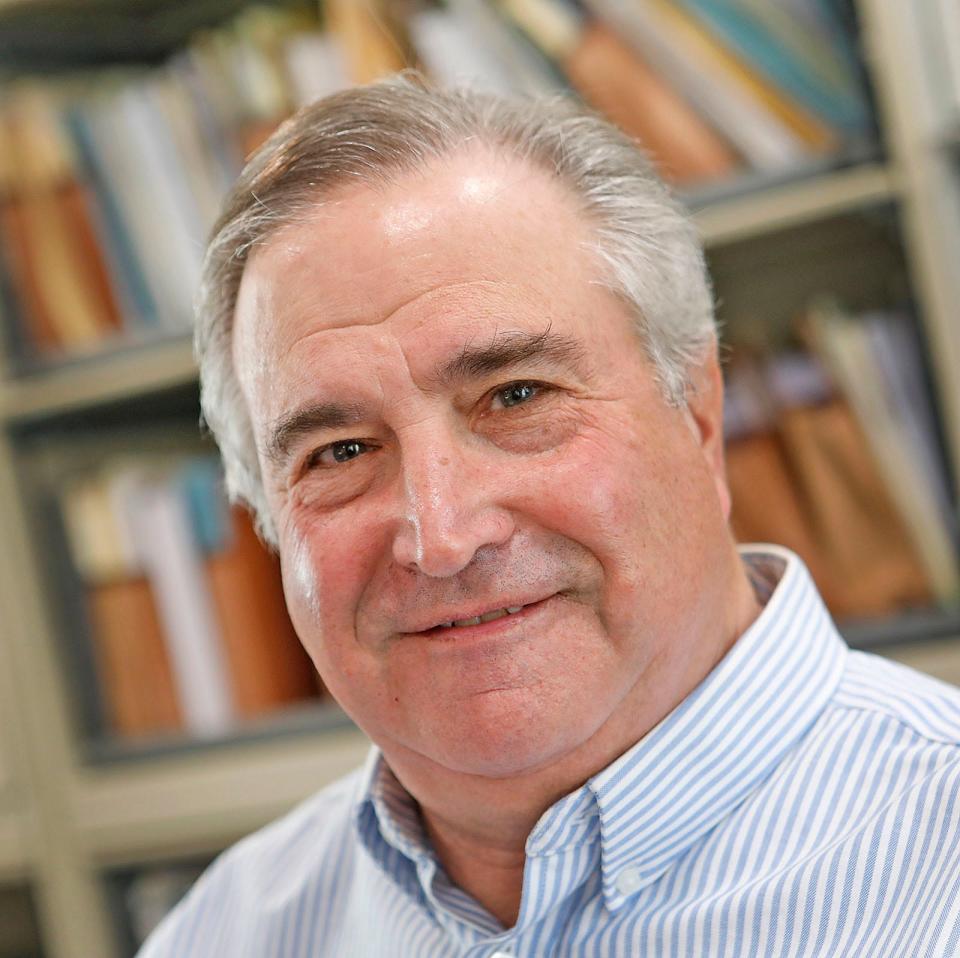
"I'll carry you out to the car if I have to," Brian, 28, who had survived his own cardiac emergency two years earlier, said.
Brian has a friend whose mother, Dianne Stanton Sanchez, is a longtime emergency room nurse at South Shore Hospital. They called her cell number; she answered and she was at work.
"I think my father is having a heart attack," Brian said. Dianne was waiting in the ER for Steve when they arrived.
The doctors ordered bloodwork, an EKG and an echocardiogram and made a timely diagnosis. Steve had not had a heart attack.
For a moment, he felt a sense of relief.
"It's worse than that," they told him.
His aorta, the largest blood vessel in the body which carries oxygenated blood from the heart, was three times the size it should be. Instead of resembling a garden hose, it was swollen larger than a soda can. There was a tear in part of the artery wall.
The artery wall's layers were weakened, stretched thin and in danger of rupturing. He needed emergency surgery that South Shore Hospital could not provide.
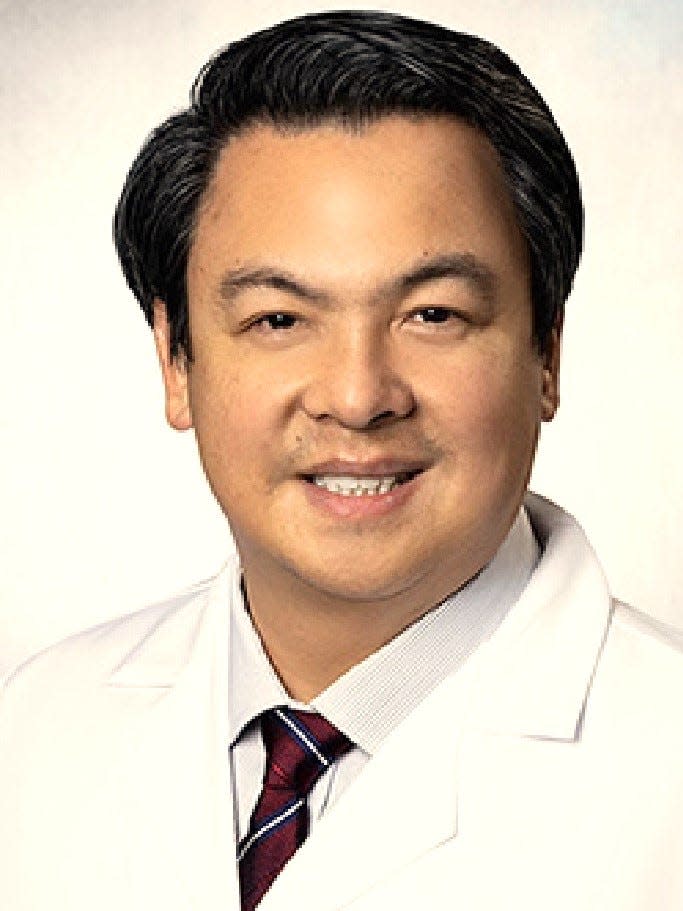
"You need to be operated on right now," the doctor said. They sent him into Brigham and Women's Hospital in Boston.
Because it was Sunday night on a three-day holiday weekend, the ambulance made it into Boston in only 20 minutes. Michelle rode with him.
'We caught Steve just in time'
At the Brigham, Dr. Kim de la Cruz, chief of aortic surgery, happened to be on call. He lives within 15 minutes, a hospital requirement for such surgeons, and was on his way.
De la Cruz is section chief of aortic surgery in the Division of Cardiac Surgery and also co-director of the Aortic Disease Center at the Brigham Heart and Vascular Center.
"I commend the providers at South Shore Hospital," de la Cruz said later. "They were fast in the diagnosis. We caught Steve just in time."
Steve's luckiest break of all might have been that when his aorta ruptured, he was either at South Shore Hospital or got there shortly after.
"If he had arrived at the hospital two hours later, he wouldn't have made it," de la Cruz said.
The South Shore doctors had slowed down Steve's heart with drugs to limit the internal bleeding before the ambulance headed for Boston. Upon arrival, he was taken straight to the operating room where de la Cruz and his team were preparing for an eight-hour surgery.
"I didn't know what my chances were, but it didn't occur to me that I might die," Steve said. "I was in a lot of pain."
In fact, his chances of survival at that point were not high. More than 30% of patients in Steve's situation die within the first two days, de la Cruz said. Most don't even make it to the ER and some are misdiagnosed.
De la Cruz stressed the importance of making more people aware of the risks of aortic disease, especially those with a family history. Caused partly by high blood pressure, it may have no symptoms until an aneurysm, or ballooning at a weak spot in the artery wall, develops or bursts. Primary care doctors can evaluate patients for the disease and refer them to a cardiologist, who can monitor the condition with CT scans.
Steve learned that although there are no conclusive studies, there is some evidence that aortic disease runs in families. He had never thought he was at risk, but he remembered that his father died of a ruptured aorta at age 56. Two years ago, his son, Brian, now 28, felt unwell at work, went to the hospital and ended up having surgery for an aortic dissection or a tear in his aorta wall.
Heart surgery can be as intense 'as launching a rocket'
As Steve arrived at the Brigham, a team of more than a dozen people was preparing for what became a 13-hour procedure. De la Cruz likened the scene in the large surgical suite to "launching a rocket."
There were three anesthesiologists, three operating room nurses, one senior chief resident physician, two intensive care physicians, two physician assistants, and other nurses and medical assistants.
It took an hour-and-a-half just to prepare him for anesthesia, open his chest, and do the grafts to connect him to a heart-lung machine to take over his body's life-sustaining functions. De la Cruz and his team checked his aortic valve and the blood flow to his kidneys, liver, brain and right arm. His body temperature was cooled down over several hours.
Specializing in this surgery can be a demanding way of life, one de la Cruz calls "a commitment, a vocation." He does six to eight aortic cases every month and some 200 surgical cases of various types a year. He has four partners who fill in for one another as needed.
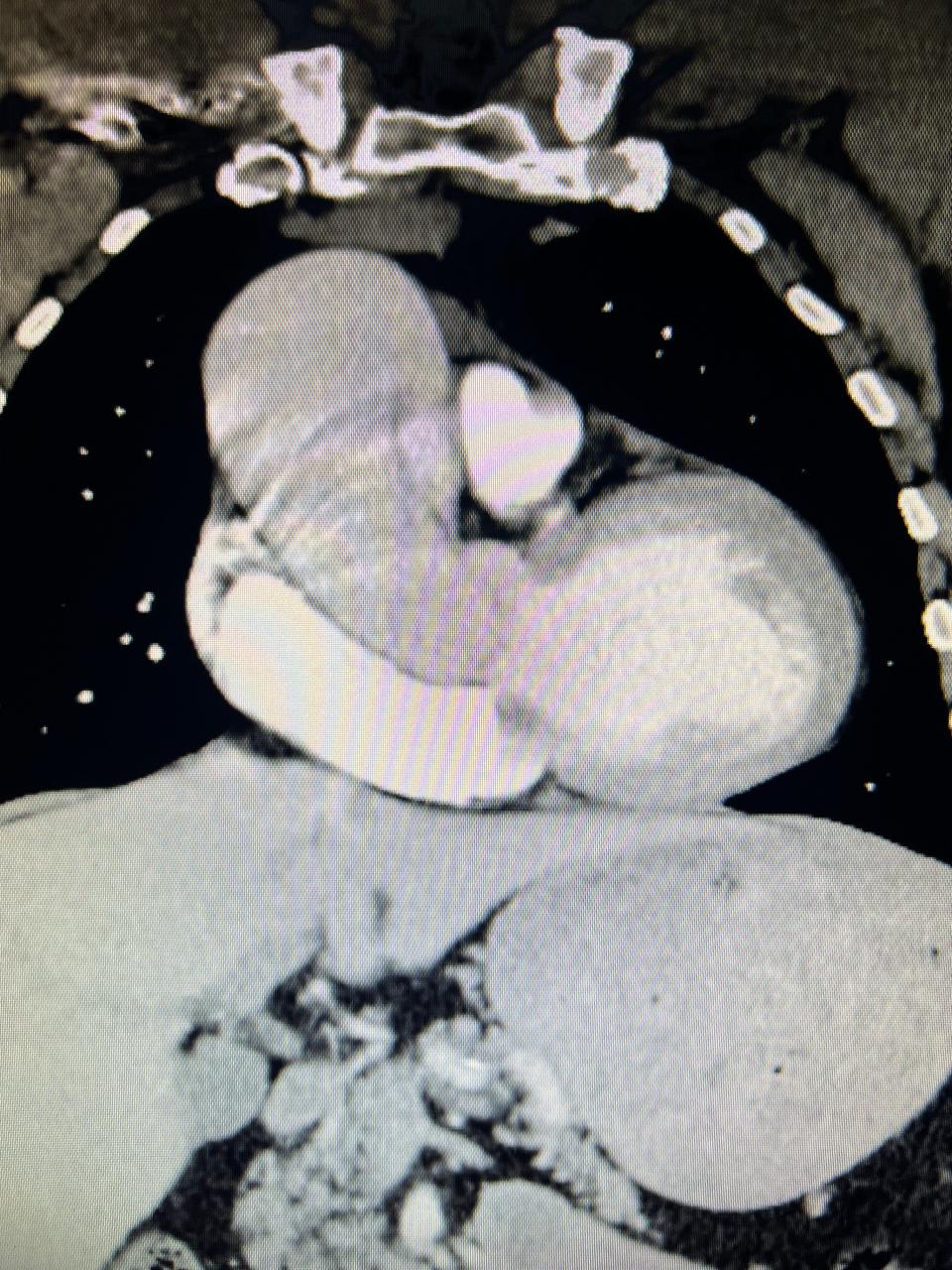
"When I was (operating), my adrenalin level was so high that I never felt hunger, tired, sleepy or had to void," he said. "We learn how to always eat when we can, and sleep when we can, to always be ready."
Asked why he chose this specialty, one that required eight to 10 years of training after medical school, de la Cruz said, "This is one of the most challenging fields in medicine and I like helping people with really tough problems, in dire need, and make a difference."
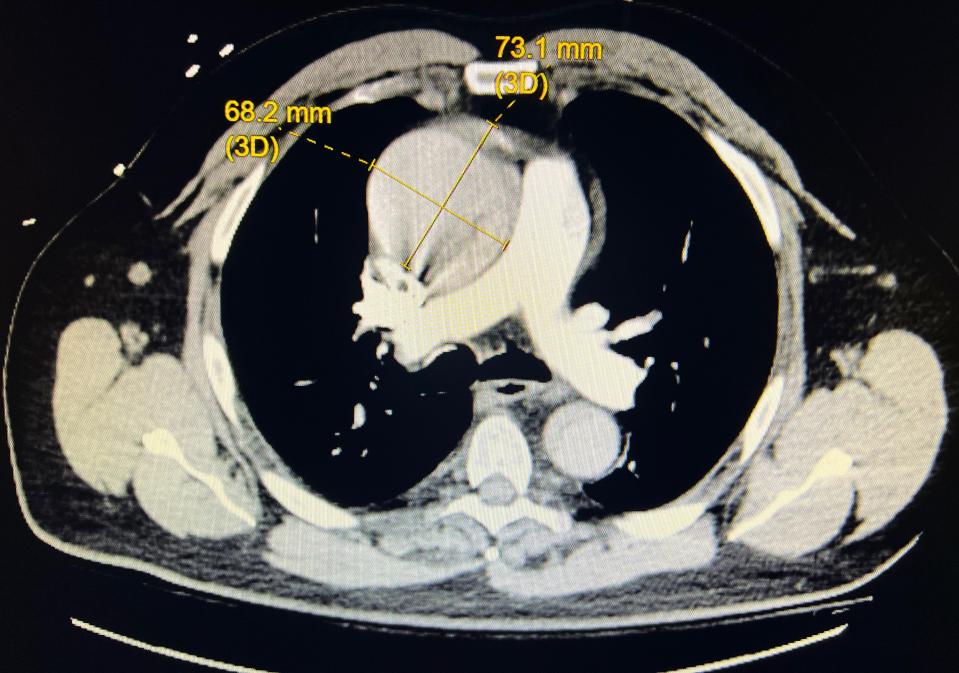
While the surgery lasted throughout the night, Michelle, Brian and their older son, Kevin, had settled down in a hospital waiting room. Before the procedure began, de la Cruz came down to check Steve's medical history with Michelle and quickly left, saying, "I have to get back up there and try to save your husband's life."
During the 13 hours, the aortic surgery team moved through a series of procedures to stop the bleeding, repair and reconnect the torn aorta, and try to ensure it would stay intact by wrapping a Dacron polyester sleeve around it.
Steve was in intensive care for two days, in the hospital for another two weeks and then returned home to begin a slow but steady recovery. He could not drive for weeks and gradually began to walk and exercise again.
His longtime friendships at the South Shore YMCA were a boost. Allen Rand, of Quincy, had jogged, played basketball and swum with Steve for years. Rand and others came by almost daily to go for walks with him, starting at 10 minutes and building up to 6 miles, from March through June.
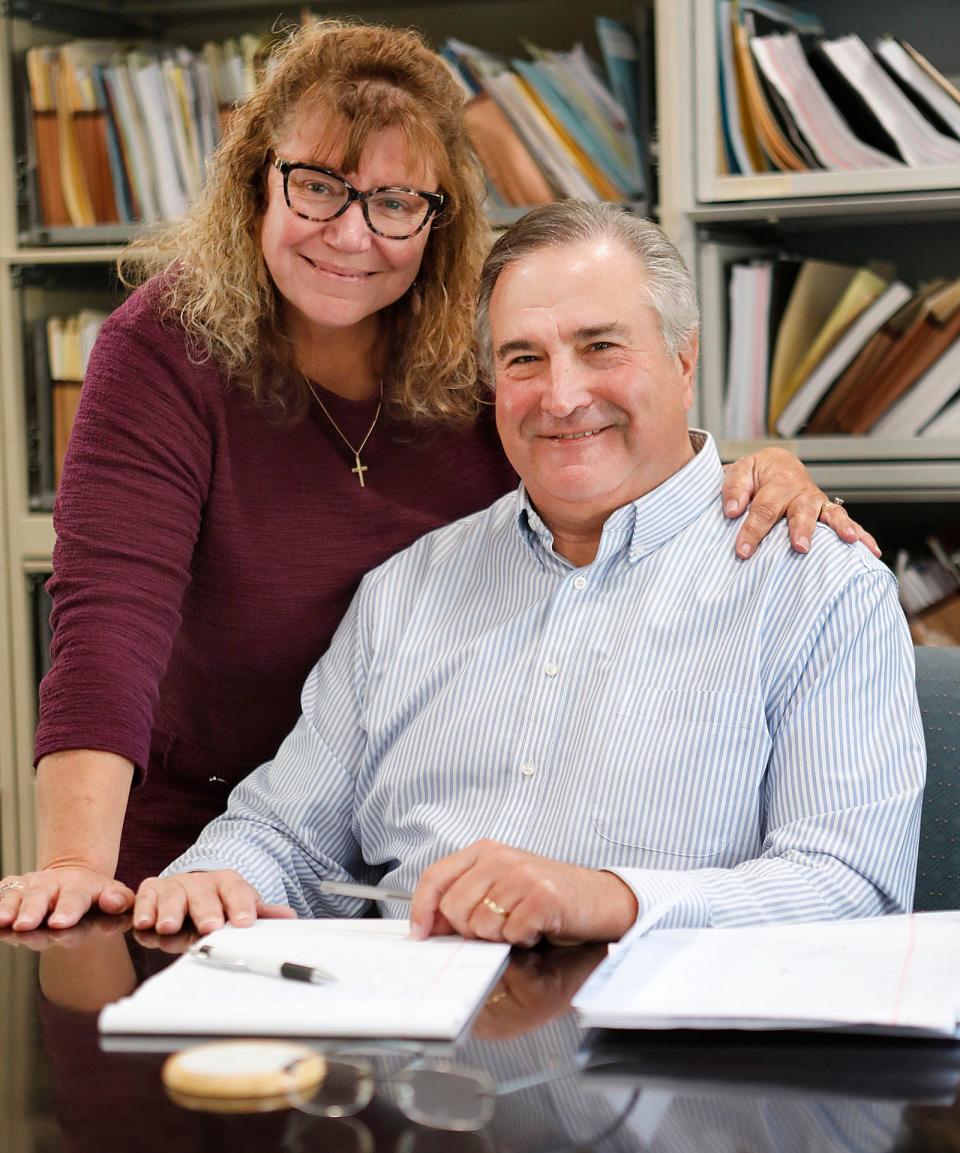
"Steve is my friend and he needed someone to get him out there and motivate him," Rand said. "It's easy to quit when no one is prodding you."
'Having Boston's top doctors saved my life'
Gratitude seems almost too limited a word for what Steve feels today as he faces treatment and surveillance for the rest of his life.
"I was lucky to get one of the top doctors and very lucky to have had such a skilled surgeon and get the care I got at South Shore and Brigham and Women's Hospital," he says.
"If I had been living in a different part of the country, I wouldn't have made it. And the nurses were fantastic."
Michelle has been steadfast throughout, a crucial partner in many ways. She is also a lawyer. They met at the New England School of Law and she practices with him at South Shore Law in Hingham.
During his long recovery, Michelle stepped up her role, running their law practice. Since his return, he has shortened his day, ending work at 4:30 p.m. rather than 7 p.m.
"A lot of pressure fell on her to take things over," he said.
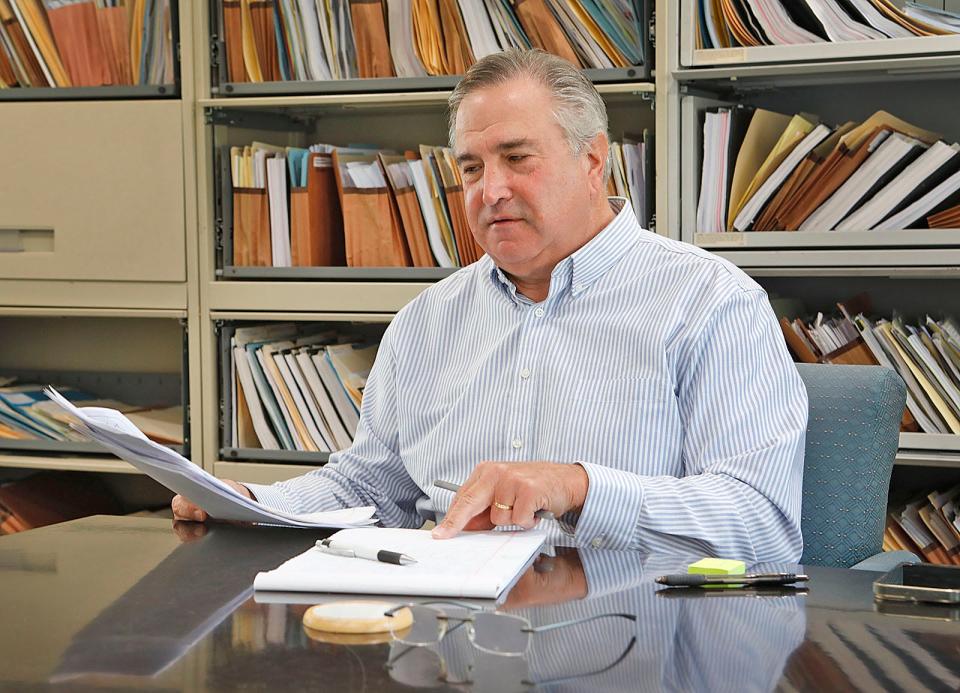
While Steve talks about being lucky, he also describes a broader change in his outlook.
"I used to be a very pessimistic person who looked on the dark side of things," he says. "Now I feel I've gotten a second chance at life and feel kind of glad to be alive."
He is Jewish; Michelle is Catholic.
"I had always kind of pooh-poohed religion," he says. "To be honest with you, I almost looked down on it. And through this whole ordeal, my wife's faith sustained her and helped her through this.
"She is a Catholic and pretty religious, and every day she would pray for me.
"I wouldn't say I am a strong believer now, but I admire the way her faith helped her through her ordeal. It doesn't hurt to pray."
Reach Sue Scheible at sscheible@patriotledger.com.
This article originally appeared on The Patriot Ledger: Hingham lawyer survives ruptured aorta. Emergency surgery saves a life

